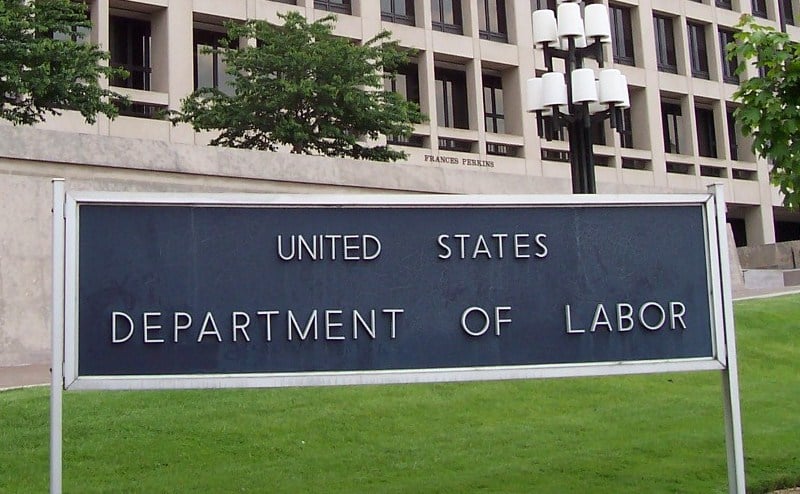Economy
Unemployment Improves, Yet Labor Force Participation Hits Multiyear Low
Published:
The U.S. Department of Labor released the Unemployment Situation Report for the month of December. Overall, there was a solid pace in December, which signaled continued momentum for the labor market after the United States has had the strongest year of job growth in 15 years. Unfortunately, this continued argument about the labor force participation rate just keeps getting worse and makes the broader gains harder to cheer. Source: Ed Brown, via Wikimedia Commons
Source: Ed Brown, via Wikimedia Commons
Employers added 2.95 million jobs in 2014, which was the biggest increase for a year since the number was over 3 million in 1999. Note that the U.S. population has increased significantly within that time to over 318 million in 2014, compared to 279 million in 1999. Unemployment in 1999 was only 4.0%.
Total nonfarm payroll employment increased by 252,000 compared to a Bloomberg consensus price target of 245,000. In 2014, job growth averaged 246,000 per month, against an average monthly gain of 194,000 in 2013. In December, the largest increases in employment were seen in professional and business services, construction, food services and drinking places, health care and manufacturing.
Looking back, there were revisions that showed employers added 50,000 more jobs in October and November than previously estimated. November’s payroll gain was revised up to 353,000 from the initially reported 321,000. October reported a payroll gain of 261,000, which was revised up from 243,000.
Private payrolls decreased to 240,000 from November’s revised reading of 345,000. However this did come over the top of the Bloomberg consensus estimate of 238,000.
The unemployment rate declined to 5.6% against a consensus estimate of 5.7%, and the number of unemployed persons declined by 383,000 to 8.7 million. Over the year, the unemployment rate and the number of unemployed persons were down by 1.1 percentage points and 1.7 million, respectively.
The average workweek for all employees on private nonfarm payrolls was unchanged at 34.6 hours in December, which matched up with the consensus estimate. The manufacturing workweek edged down by 0.1 hour to 41.0 hours, and factory overtime edged up by 0.1 hour to 3.6 hours.
Even though there was steady hiring in the month of December, wages fell from November by 0.2%, compared to a consensus estimate of a 0.2% gain. This was up from 1.7% from the previous year.
The civilian labor force participation rate dropped by 0.2 points to 62.7% in December. That appeared to be the lowest rate in years. Also in December, the employment-population ratio was 59.2% for the third consecutive month.
Take the quiz below to get matched with a financial advisor today.
Each advisor has been vetted by SmartAsset and is held to a fiduciary standard to act in your best interests.
Here’s how it works:
1. Answer SmartAsset advisor match quiz
2. Review your pre-screened matches at your leisure. Check out the
advisors’ profiles.
3. Speak with advisors at no cost to you. Have an introductory call on the phone or introduction in person and choose whom to work with in the future
Take the retirement quiz right here.
Thank you for reading! Have some feedback for us?
Contact the 24/7 Wall St. editorial team.